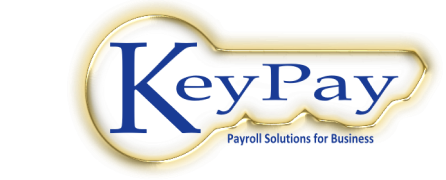Changes from April 2012
Student Loans
- Removal of end-of-year reconciliations
- Mandatory use of SL on more Tax codes
- Compulsory commissioner deductions
- Borrower extra repayment options
Kiwi Saver ESCT
- End of employer contribution exemption
- Calculation of ESCT rate and threshold
ACC Levy
- Reduces to $1.70 per $100
- Upper threshold increases to $113,768.00
Student Loans
I.R. has removed the requirement for a year end reconciliation and introduced the concept of full and final repayment obligation.
All borrowers must use the SL code regardless of whether their income is under or over the annual repayment threshold. Two new tax codes are now available SB SL and ML SL. (i.e. the SL deductions must now be applied to the SB and ML codes.)
Enrolled full-time students can get an exemption from pay-by-pay repayments when their pay is above the threshold and their annual income is expected to be below the annual threshold. This would be likely while studying and they have higher paying short term jobs .
Two sub-tax codes; SLCIR and SLBOR, have been added to provide flexibility and to separate the individual repayment amounts in the monthly EMS return. In addition, smaller repayment amounts can be made with an SDR certificate, which is similar to an STC certificate, but only affects student loans - not tax. The STC still applies if a special tax rate is also needed. A special deduction rate of 0 to 9% can apply to either code.
The SLCIR code is a compulsory additional repayment from 1 to 5% for recovery of a significant under deduction - possibly due to previous earnings when the SL deduction code was not used, or on other income.
The SLBOR is a voluntary code to allow borrowers to make additional repayments above the standard rate. If these amounts exceed the published threshold and are determined to be significant, they will qualify for a bonus calculation. This repayment can be either a % of gross earnings or a fixed $ amount additional to the standard payments.
All except SLBOR are to be implemented only when requested by I.R. On 'M' codes, repayments are subject to a minimum threshold for both the standard and compulsory payments. The amount is calculated on the gross pay less the threshold. SLBOR payments are not subject to the threshold and if percentage based are always calculated on the gross pay.
In summary, the purpose of SDR is to reduce the normal 10% payment to between 0 and 9% and the SLCIR is an additional repayment of up to 5% on top of the regular 10%. Both cannot apply at the same time and various situations of priority can apply. Refer to I.R documentation.
Kiwi Saver
ESCT now applies on all employer contributions whether mandatory or not. From 1st April 2012 the previous 2% contribution exemption has been removed.
The flat ESCT rate option of 33% has been removed from Kiwi Saver and Complying funds and is now only available for defined benefit funds that comply with Sec15(1)(a) of the Superannuation Schemes Act 1989.
Calculation of ESCT has not changed in itself, but as most employers previously paid only the mandatory 2% they are likely unfamiliar with ESCT. I.R have since clarified the interpretation, so the whole detail of the process is repeated below in blue. As it is rather convoluted, skip them if you wish, as on face value the whole logic does not seem to make much sense.
Simply, a fixed tax rate for the year is determined based on last year, or a best guess, and applied to whole dollars of the employer current pay contribution amount. The fund gets the contribution less the ESCT.
There are two parts to the process. The employer calculates his contribution as a % of the employees wages including any cents. On a $1010.00 weekly pay at 2% the employers contribution is $20.20. The ESCT on this amount is at a rate determined by the threshold on the whole dollars. Thus for a $20.20 contribution the ESCT is a % of $20.00 (no cents) which is subtracted from the $20.20 and paid via I.R. to the fund.
The actual rate used for the calculation is determined by the threshold, which has three earning points: $16,800, $57600 and $84000, with four prescribed rates of 10.5, 17.5, 30 and 33% for below, between and above each point respectively. So if an employees salary was $52,520 p.a, the weekly pay is $1010.00 and the 2% contribution $20.20 ($1050.40 P.A). This gives an earnings point for ESCT of $53570.40 (salary + employers 2%) which is below the $57600 threshold so the rate is 17.5%. At this rate the ESCT on $20.00 is $3.50, leaving $16.70 as the net employer Kiwi contribution.
The threshold is based on last years total earnings (if a complete year) or else an employers estimation of this years earnings, plus the employers gross Kiwi contributions. i.e Salary plus the employer contribution. (If last year is zero or not a complete year, KeyPay just applies the greater of the current or standard pay, grossed up to a year - as is used for tax.) The threshold, once determined applies until the following year by which time the actual earnings are likely known and if for a completed year become next years threshold value. (KeyPay allows last years value to be altered manually to override the grossed up calculation if needed.)
The Income Tax Act allows for a trade-off of employer contributions against lump sums. i.e With the employees agreement, instead of the employer including the cash with wages it could be paid directly to the fund, and depending on the employees marginal PAYE rate, the ESCT due may be less giving and overall long-term benefit to the employee.
